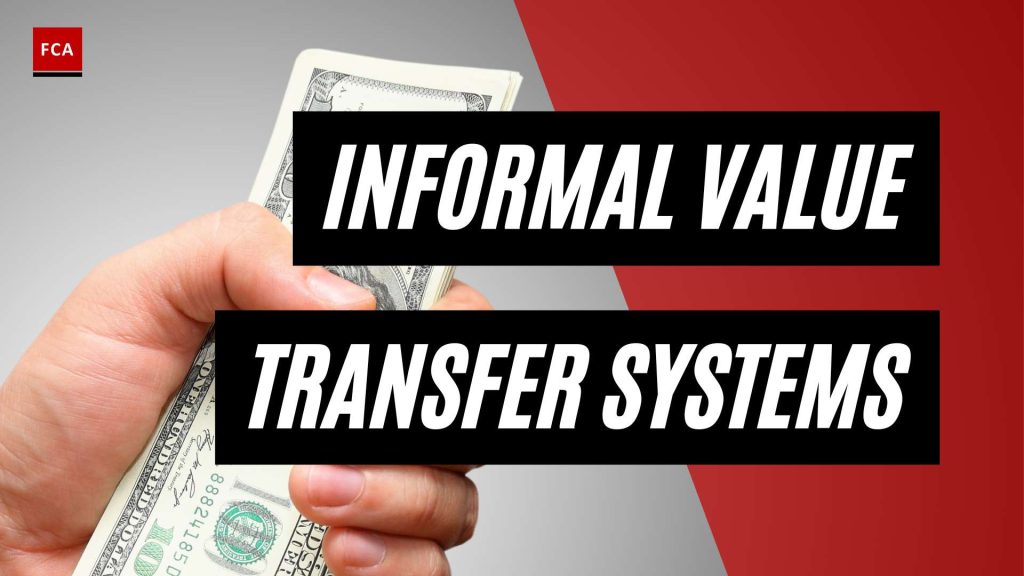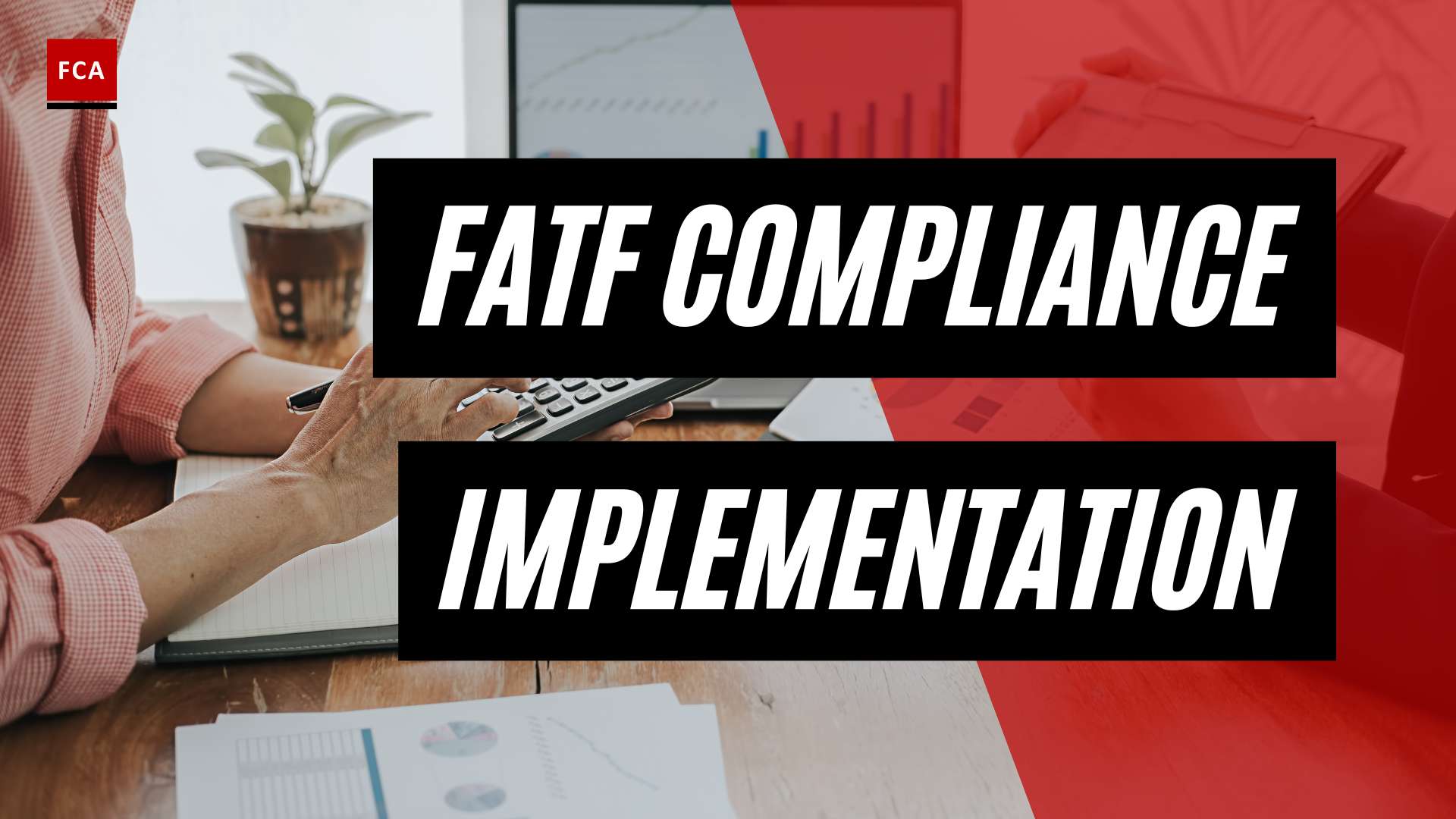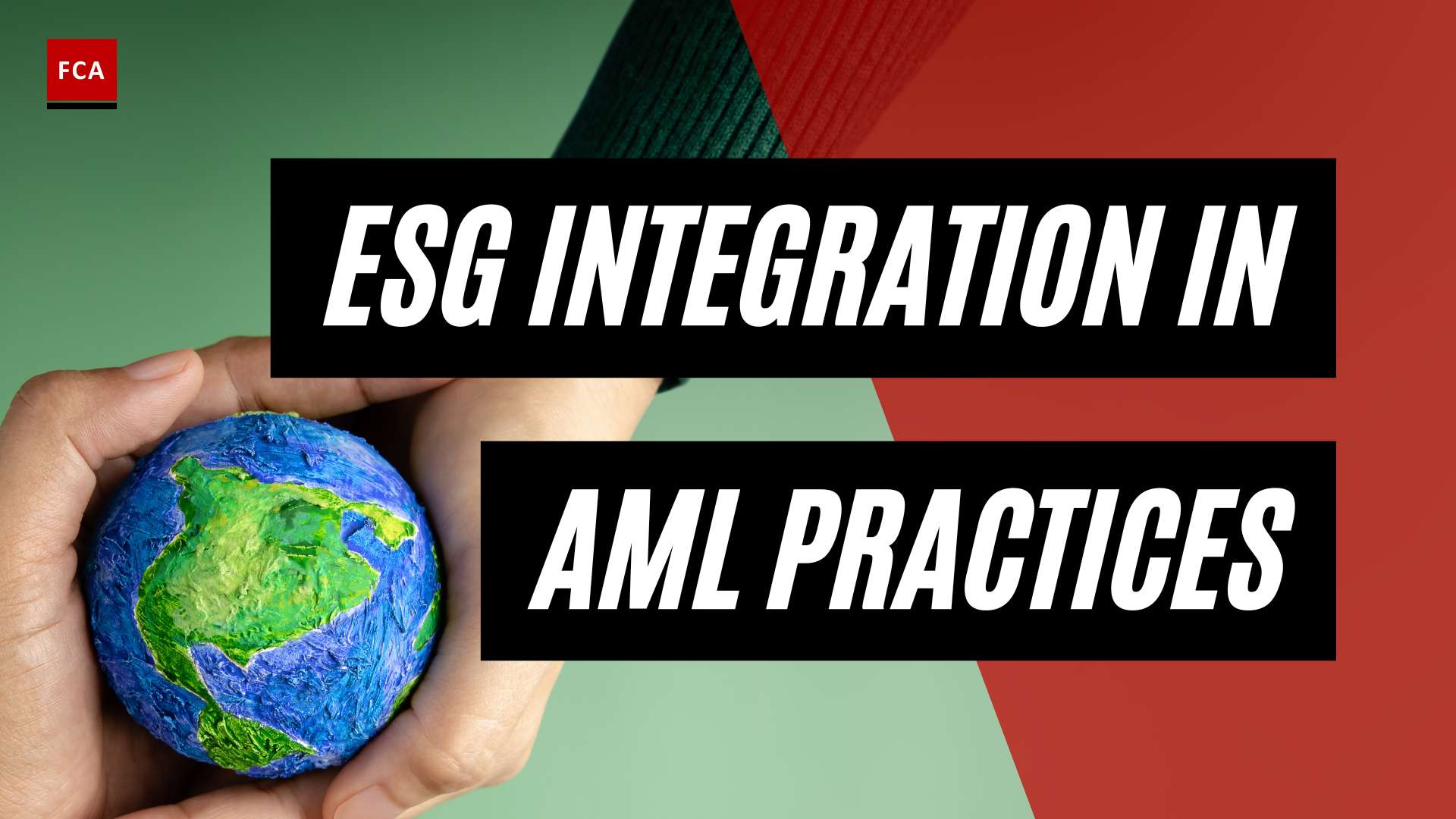Understanding Informal Value Transfer Systems (IVTS)
Informal Value Transfer Systems (IVTS) are alternative methods used to transfer funds or value from one location to another, bypassing the traditional banking system. These systems are often utilized in areas where banking services are limited, restricted, or unavailable. IVTS can be formal or informal and are predominantly cash-based. While they can facilitate legitimate remittances, they also pose risks for criminal exploitation, including money laundering and terrorist financing, due to the lack of oversight and regulation.
What are Informal Value Transfer Systems (IVTS)?
IVTS are a means of transferring money or value outside the formal banking system. They operate through networks of agents or intermediaries who facilitate the exchange of funds or value between customers. These agents play a crucial role in the functioning of IVTS and are often trusted members of the community. The use of IVTS allows individuals to transfer money with limited documentation, providing a level of anonymity and flexibility not found in traditional banking systems.
Historical Roots of IVTS
The roots of IVTS can be traced back over 4,000 years, pre-dating modern banking systems. These systems have existed as an alternative and unofficial remittance and banking system for centuries. IVTS operations can be found in various regions around the world, known by different names such as hawala in the Middle East and Indian Sub-Continent, fei ch’ien (“flying money”) in China, phoe kuan in Thailand, and the Black Market Peso Exchange in South America.
The historical development of IVTS reflects the need for alternative financial systems in regions where traditional banking services were limited or inaccessible. These systems served as a way for communities to conduct monetary transactions and facilitate cross-border remittances.
It is important to note that IVTS are not inherently illegal, and many individuals rely on these systems for legitimate purposes, such as sending remittances to family members in other countries or conducting business transactions where traditional banking services are limited. However, the characteristics of IVTS, including their anonymity, limited documentation, and lack of formal oversight, make them vulnerable to exploitation by criminal actors seeking to engage in illicit financial activities.
To address the risks associated with IVTS, regulators and international organizations have made efforts to regulate and provide oversight for these systems. These initiatives aim to strike a balance between preventing illicit financial activities and ensuring that underserved populations still have access to financial services. The Financial Action Task Force (FATF) plays a significant role in setting international standards and providing guidance on combating money laundering and terrorist financing through IVTS.
In the following sections, we will explore the functioning of IVTS, their association with illicit financial activities, regulatory efforts, case studies, and recommendations for preventing misuse of these systems.
The Functioning of IVTS
Informal Value Transfer Systems (IVTS) operate through a network of agents or intermediaries who facilitate the exchange of funds or value between individuals, often charging a fee or commission for their services (Center for Development of Security Excellence). These agents play a crucial role in the functioning of IVTS, ensuring the smooth transfer of funds.
Agents and Intermediaries in IVTS
IVTS rely on a network of trusted agents and intermediaries who act as facilitators in the transfer process. These individuals are typically well-known and respected members of the community. They establish relationships with customers who wish to send or receive funds through the IVTS. The customers provide money to the agents, who then arrange for the delivery of funds to the intended recipient, often in another region or country.
The methods used by agents to transfer funds vary depending on the specific IVTS. Some common methods include utilizing couriers, using men or animals to physically transport money, or conducting wire transfers (Wikipedia). The choice of method depends on factors such as the location of the sender and recipient, the urgency of the transfer, and the preferences of the individuals involved.
Risks and Challenges of IVTS
While IVTS serve legitimate purposes such as remittances and facilitating transactions in areas with limited access to traditional banking services, their informal nature poses risks and challenges. The lack of formal oversight and regulation makes it challenging for authorities to detect and prevent illicit financial activities conducted through IVTS (Center for Development of Security Excellence).
Criminals may exploit IVTS for money laundering and terrorist financing purposes due to factors such as the decentralized nature of these systems, reliance on cash transactions, limited documentation, and the anonymity they provide. The anonymity and limited traceability of IVTS transactions make it difficult for law enforcement and regulatory authorities to identify and disrupt illicit activities. This poses challenges in effectively combating financial crimes associated with IVTS (Center for Development of Security Excellence).
To address these risks, various jurisdictions have implemented efforts to regulate and monitor IVTS. These measures aim to enhance transparency, accountability, and the effectiveness of risk mitigation to prevent criminal exploitation and safeguard the integrity of the financial system (Center for Development of Security Excellence). However, striking the right balance between regulation and financial inclusion remains a challenge in order to preserve the benefits IVTS provide to underserved populations while mitigating the risks associated with illicit financial activities.
Understanding the role of agents and intermediaries in IVTS and the inherent risks and challenges they pose is essential for regulatory authorities, compliance professionals, and individuals involved in anti-money laundering and anti-financial crime efforts. By addressing these challenges and implementing effective regulatory frameworks, authorities can work towards minimizing the misuse of IVTS while ensuring financial inclusion and security.
IVTS and Illicit Financial Activities
Informal Value Transfer Systems (IVTS) are not only used for legitimate purposes but also pose risks for illicit financial activities, including money laundering and terrorist financing. The lack of oversight and regulation in IVTS makes them attractive for criminal exploitation, primarily due to the decentralized nature, limited documentation, and reliance on cash transactions. In this section, we will explore two key illicit financial activities associated with IVTS: money laundering and terrorist financing.
Money Laundering through IVTS
IVTS can be vulnerable to money laundering due to the anonymity and limited traceability of transactions. Criminal networks may exploit these characteristics to obscure the origin and destination of illicit funds. Money laundering through IVTS involves the process of making illicitly obtained funds appear legitimate by integrating them into the formal financial system.
Criminals often employ IVTS as a means to transfer funds across borders without attracting the attention of authorities. One widely known example of an IVTS exploited for money laundering is the Hawala system, prevalent in regions like the Middle East and the Indian subcontinent. Hawala transactions involve the use of trusted brokers who facilitate the transfer of funds without traditional banking channels. These transactions often lack proper documentation, making it difficult for authorities to detect and track illicit funds.
Efforts to combat money laundering through IVTS include international collaborations, increased surveillance, and regulatory frameworks. Governments and regulatory bodies have implemented measures such as Know Your Customer (KYC) requirements and Anti-Money Laundering (AML) policies to mitigate the risk of illicit financial activities associated with IVTS.
IVTS and Terrorist Financing
IVTS can also be exploited for terrorist financing, enabling the transfer of funds to finance illegal activities. The decentralized and cash-based nature of IVTS makes it challenging for authorities to trace and monitor funds used for terrorist financing purposes.
While the exact extent of IVTS involvement in terrorist financing is difficult to determine, several cases and investigations have highlighted the potential risk. IVTS provide an avenue for funds to be transferred across borders without attracting suspicion or detection. Criminal networks involved in terrorist financing may use IVTS, such as the Hawala system and other alternative remittance systems, to move funds discreetly and evade regulatory oversight.
Addressing the risk of terrorist financing through IVTS requires international cooperation, intelligence sharing, and enhanced regulatory measures. Financial institutions, governments, and law enforcement agencies work together to identify and disrupt networks involved in terrorist financing and implement measures to detect and prevent the misuse of IVTS for these purposes.
By examining the risks associated with money laundering and terrorist financing in IVTS, regulatory bodies such as the Financial Action Task Force (FATF) and other international organizations strive to develop frameworks and recommendations to enhance transparency, strengthen compliance efforts, and combat financial crimes associated with IVTS. Preventing the misuse of IVTS requires a comprehensive approach that balances regulatory measures with financial inclusion to ensure the safety and integrity of the global financial system.
Regulating IVTS
Efforts to regulate Informal Value Transfer Systems (IVTS) have been undertaken by various jurisdictions to address the risks associated with these systems and mitigate their potential misuse for illicit financial activities, including money laundering and terrorist financing. The lack of oversight and formal regulation of IVTS poses challenges for law enforcement and regulatory authorities in detecting and preventing such activities. However, steps have been taken to establish regulatory frameworks and oversight mechanisms to combat these risks.
The Role of Financial Action Task Force (FATF)
The Financial Action Task Force (FATF) plays a significant role in combating money laundering and terrorist financing worldwide. It has developed recommendations and guidance to assist countries in implementing measures to prevent the misuse of IVTS. The FATF has recognized the challenges related to regulating IVTS and has emphasized the importance of striking a balance between regulation and maintaining the essential financial services these systems provide to underserved populations.
In its recommendations, the FATF emphasizes the need for countries to regulate and supervise IVTS to prevent their exploitation for illicit activities. The FATF has issued specific guidelines to address the risks associated with IVTS, aiming to enhance transparency, accountability, and the effectiveness of risk mitigation measures. The recommendations highlight the importance of implementing licensing requirements, reporting obligations, and oversight mechanisms.
By formalizing and supervising IVTS operations, authorities can enhance transparency and accountability, making it easier to trace the source and destination of funds transferred through these systems. This increased oversight helps in preventing criminal exploitation, safeguarding the integrity of the financial system, and ensuring compliance with anti-money laundering (AML) and counter-terrorism financing (CTF) regulations.
The efforts of the FATF and other regulatory bodies are aimed at striking the right balance between regulation and financial inclusion. While regulating IVTS is crucial to mitigate the risks of money laundering and terrorist financing, it is also important to recognize the role of these systems in providing essential financial services to underserved populations.
In conclusion, regulating IVTS is essential to combat money laundering and terrorist financing. The FATF and other regulatory bodies have developed recommendations and guidance to help countries establish effective regulatory frameworks and oversight mechanisms for IVTS. By striking the right balance between regulation and financial inclusion, authorities can mitigate risks while ensuring that underserved populations continue to benefit from these informal value transfer systems.
IVTS in Different Regions
Informal Value Transfer Systems (IVTS) are found in various regions around the world, each with their own unique names and characteristics. Let’s explore some of the prominent IVTS in different regions.
IVTS in the Middle East and Indian Sub-Continent (Hawala)
In the Middle East and Indian Sub-Continent, the IVTS is commonly referred to as hawala (IMF). Hawala networks have a long history and continue to play a significant role in facilitating remittances and fund transfers across borders. The system operates through a network of hawala brokers who act as intermediaries between the sender and recipient.
Hawala transactions are based on trust and rely on the reputation of the hawala brokers. The sender provides money to a hawala broker in one region, who then arranges for the equivalent amount to be delivered to the recipient in another region. This can be done through various means, such as couriers, wire transfers, or even the use of animals. Hawala is known for its speed and efficiency, with funds often transferred within a few hours.
IVTS in China (Fei Ch’ien)
In China, the IVTS is known as Fei Ch’ien (“flying money”) (IMF). Fei Ch’ien operates similarly to hawala, with intermediaries facilitating the transfer of funds between different regions. The system has a long history in China and is deeply embedded in the country’s financial culture.
Fei Ch’ien transactions involve the sender giving money to an intermediary in one region, who then arranges for the funds to be delivered to the recipient in another region. The system is known for its speed and efficiency, making it a popular choice for domestic and international remittances.
IVTS in South Asia (Hundi)
In South Asia, particularly in countries like India, Pakistan, and Bangladesh, the IVTS is known as hundi (IMF). Hundi has a long-standing tradition and is widely used for remittances and money transfers within the region.
Hundi transactions involve the sender providing funds to a hundi operator, who then arranges for the equivalent amount to be paid to the recipient in another location. The system operates on trust and reputation, with hundi operators having established networks and connections across different regions.
IVTS in Southeast Asia (Phoe Kuan)
In Southeast Asia, particularly in countries like Thailand, the IVTS is known as Phoe Kuan. Phoe Kuan operates similarly to other IVTS, with intermediaries facilitating the transfer of funds between different regions. While not as widely known as hawala or hundi, Phoe Kuan plays a significant role in the region’s informal financial landscape.
Phoe Kuan transactions involve the sender providing funds to an intermediary, who then arranges for the equivalent amount to be delivered to the recipient in another region. The system offers speed, convenience, and anonymity, making it an attractive option for individuals and businesses.
Understanding the different IVTS in various regions provides insights into the diverse methods and systems used for informal money transfers. While these systems offer advantages such as speed and versatility, they also pose risks and challenges, including the potential for misuse in illicit financial activities. Regulators and authorities continue to navigate the balance between regulating IVTS to mitigate risks while ensuring financial inclusion for underserved populations.
Balancing Regulation and Financial Inclusion
As regulatory authorities seek to address the risks associated with informal value transfer systems (IVTS), it is crucial to strike a balance between regulation and financial inclusion. IVTS play a significant role in providing financial services to underserved populations, particularly in areas where traditional banking systems may be inaccessible or inadequate. However, regulating these systems poses its own set of challenges.
Importance of IVTS for Underserved Populations
Informal value transfer systems are lifelines for many underserved populations around the world. Diaspora communities heavily rely on these systems to send money back to their home countries, supporting their families and communities. These systems offer a faster, less bureaucratic, and more cost-effective means of transferring funds compared to traditional banking channels (Regulation of Informal Value Transfer Systems).
For instance, in countries like Somalia, where traditional banking infrastructure is limited, IVTS are essential for economic stability. Estimates suggest that remittances sent through these systems account for about 60% of the country’s GDP. The ability to receive funds quickly and reliably through IVTS contributes to the livelihoods and development of communities in such regions (Regulation of Informal Value Transfer Systems).
Challenges in Regulating IVTS
Regulating IVTS presents several challenges for regulatory authorities. One of the primary difficulties lies in distinguishing between remittance transfers conducted through IVTS and those conducted by entities that qualify as money services businesses. The lines between these entities can be blurred, making it challenging to develop clear regulatory frameworks to address the risks associated with IVTS (Regulation of Informal Value Transfer Systems).
Another challenge is striking a balance between preventing illicit financial flows, money laundering, and terrorist financing activities while ensuring that legitimate and necessary financial services are still accessible to underserved populations. Excessive regulation may inadvertently hinder financial inclusion, as it could lead to increased costs, compliance burdens, and reduced access to services for those who rely on IVTS.
To address these challenges, regulatory authorities need to adopt a risk-based approach to regulation. This approach involves understanding the specific risks associated with the different types of IVTS and tailoring regulatory measures accordingly. Collaboration between regulators, financial institutions, and IVTS providers is also crucial to develop effective and practical regulatory frameworks that strike the right balance between combating illicit activities and preserving financial inclusion.
By recognizing the importance of IVTS for underserved populations and addressing the challenges in regulating these systems, regulatory authorities can work towards ensuring that the benefits of financial services are accessible to all while safeguarding against the misuse of IVTS for illicit activities.
Case Studies and Examples
Examining real-world instances of informal value transfer systems (IVTS) helps shed light on their significance and the impact they have on certain regions and communities. Two notable case studies are IVTS in Somalia and remittances, as well as the increased surveillance and regulations post-9/11.
IVTS in Somalia and Remittances
Informal value transfer systems, such as hawala networks, play a crucial role in facilitating remittances for countries like Somalia. In fact, remittances from overseas diaspora account for approximately 60% of Somalia’s GDP, highlighting the significance of these systems in supporting the economic stability of nations (Regulation of Informal Value Transfer Systems).
The Somali money transfer business is designed to meet the needs of its clients, offering a faster, less bureaucratic means of sending money home compared to traditional banking channels that often require extensive documentation. The efficiency and accessibility of IVTS make them a preferred choice for individuals who rely on remittances to support their families and communities (Regulation of Informal Value Transfer Systems).
Increased Surveillance and Regulations Post-9/11
Following the events of 9/11, regulatory authorities, including the US government, have intensified their surveillance and implemented stricter regulations on IVTS. The aim is to prevent illicit financial flows, money laundering, and terrorist financing activities that may exploit these systems (Regulation of Informal Value Transfer Systems).
The increased scrutiny and regulations are a response to concerns about the potential misuse of IVTS for illicit purposes. Regulatory authorities face challenges in distinguishing between remittance transfers conducted through IVTS and those conducted by entities that qualify as money services businesses, as the lines between them can be blurred (Regulation of Informal Value Transfer Systems).
By examining case studies like IVTS in Somalia and the impact of increased surveillance and regulations post-9/11, we gain insights into the complex dynamics surrounding informal value transfer systems and the delicate balance between addressing regulatory concerns and preserving the essential role these systems play in facilitating financial transactions for underserved populations.
Preventing the Misuse of IVTS
To prevent the misuse of Informal Value Transfer Systems (IVTS) for illicit activities such as money laundering and terrorist financing, the Financial Action Task Force (FATF) has developed recommendations and guidance for countries to implement effective regulatory measures. These recommendations aim to strike a balance between regulation and maintaining the important financial services that IVTS provide to underserved populations.
Recommendations by Financial Action Task Force (FATF)
The FATF has acknowledged the challenges associated with regulating IVTS and has issued specific recommendations to address the risks and vulnerabilities these systems may pose. These recommendations highlight the need for countries to regulate and supervise IVTS to prevent their exploitation for illicit activities.
Some key recommendations by the FATF include:
- Legal Framework: Countries should establish a legal framework that criminalizes money laundering and terrorist financing, including the use of IVTS for these purposes. The legislation should also provide authorities with the necessary powers to investigate and prosecute such offenses.
- Licensing and Registration: Countries should implement a licensing or registration regime for IVTS providers, ensuring that they meet specific requirements related to anti-money laundering and counter-terrorist financing (AML/CTF) measures. This helps ensure that only legitimate and regulated operators are allowed to provide IVTS services.
- Customer Due Diligence (CDD): IVTS providers should conduct customer due diligence, including identifying and verifying the identities of their customers. This helps mitigate the risk of anonymous or fictitious transactions and enhances transparency.
- Record Keeping and Reporting: IVTS providers should maintain records of transactions for a sufficient period of time and report suspicious transactions to the relevant authorities. This facilitates the detection and investigation of potential money laundering or terrorist financing activities.
- International Cooperation: Countries should cooperate and exchange information with other jurisdictions to combat the cross-border misuse of IVTS. This includes sharing intelligence, collaborating on investigations, and providing mutual legal assistance.
Combating Money Laundering and Terrorist Financing
The FATF’s recommendations for IVTS aim to combat money laundering and terrorist financing by ensuring that these systems are subject to effective regulation and supervision. By implementing these recommendations, countries can enhance their AML/CTF frameworks and reduce the potential risks associated with IVTS.
It’s important to strike a balance between regulation and the financial inclusion of underserved populations. IVTS can play a significant role in facilitating remittances and providing financial services to individuals who may not have access to traditional banking channels. Therefore, it is crucial to develop regulatory measures that address the risks without stifling the benefits that IVTS offer (IMF eLibrary).
By following the FATF’s recommendations, countries can strengthen their AML/CTF regimes and prevent the misuse of IVTS for illicit financial activities. These efforts contribute to maintaining the integrity of the global financial system and protecting it from abuse.
Preventing the Misuse of IVTS
Informal Value Transfer Systems (IVTS) have been increasingly recognized as conduits for money laundering and terrorist financing, leading to heightened concerns within the global financial community. Although IVTS can serve legitimate purposes such as facilitating remittances, their unregulated nature and lack of transparency make them vulnerable to exploitation for illicit activities such as money laundering, terrorist financing, and tax evasion. As a result, regulatory authorities and international organizations have taken steps to prevent the misuse of IVTS.
Recommendations by Financial Action Task Force (FATF)
The Financial Action Task Force (FATF), an international standard-setting body in the fight against money laundering and terrorist financing, has issued specific recommendations and guidance to address the risks associated with IVTS. These recommendations emphasize the need for countries to regulate and supervise IVTS to prevent their exploitation for illicit activities.
Some of the key recommendations put forth by the FATF include:
-
Licensing and Registration: Countries are encouraged to establish licensing or registration requirements for IVTS providers. This helps ensure that IVTS operations are conducted by legitimate and trustworthy entities that comply with anti-money laundering and counter-terrorism financing obligations.
-
Customer Due Diligence (CDD): IVTS providers should be required to implement robust customer due diligence measures. This includes verifying the identity of customers, understanding the nature of the business relationship, and assessing the risk associated with each transaction.
-
Suspicious Transaction Reporting: Countries should establish mechanisms for IVTS providers to report suspicious transactions to the appropriate authorities. Timely reporting of suspicious activities is crucial in identifying potential money laundering or terrorist financing activities.
-
Supervision and Monitoring: Regulatory authorities should oversee and monitor IVTS providers to ensure compliance with anti-money laundering and counter-terrorism financing regulations. This includes conducting inspections, imposing sanctions for non-compliance, and promoting awareness and education within the IVTS sector.
By implementing these recommendations, countries can strengthen their regulatory frameworks and enhance the effectiveness of measures against money laundering and terrorist financing through IVTS. It is important for governments and regulatory authorities to work closely with IVTS providers to ensure compliance and foster a culture of transparency and risk mitigation.
Combating Money Laundering and Terrorist Financing
To combat the misuse of IVTS, governments and regulatory authorities have enhanced their efforts in monitoring and regulating these informal systems. The increased surveillance and regulations imposed post-9/11 by the US government and other jurisdictions have played a significant role in preventing illicit financial flows, money laundering, and terrorist financing activities that exploit IVTS.
By implementing stricter reporting requirements, conducting thorough investigations, and collaborating with international partners, authorities can disrupt illicit financial networks and detect patterns of suspicious activities. Additionally, educating the public and raising awareness about the risks associated with IVTS can help individuals make informed decisions and avoid inadvertently participating in illegal transactions.
Preventing the misuse of IVTS requires a comprehensive approach that balances regulatory measures with the need to promote financial inclusion and facilitate legitimate transactions. Striking this balance ensures that IVTS can continue to serve underserved populations, while simultaneously protecting the global financial system from abuse.
In the next sections, we will delve into specific case studies and examples that shed light on the role of IVTS in various regions and highlight the importance of regulatory efforts in combating illicit financial activities.








